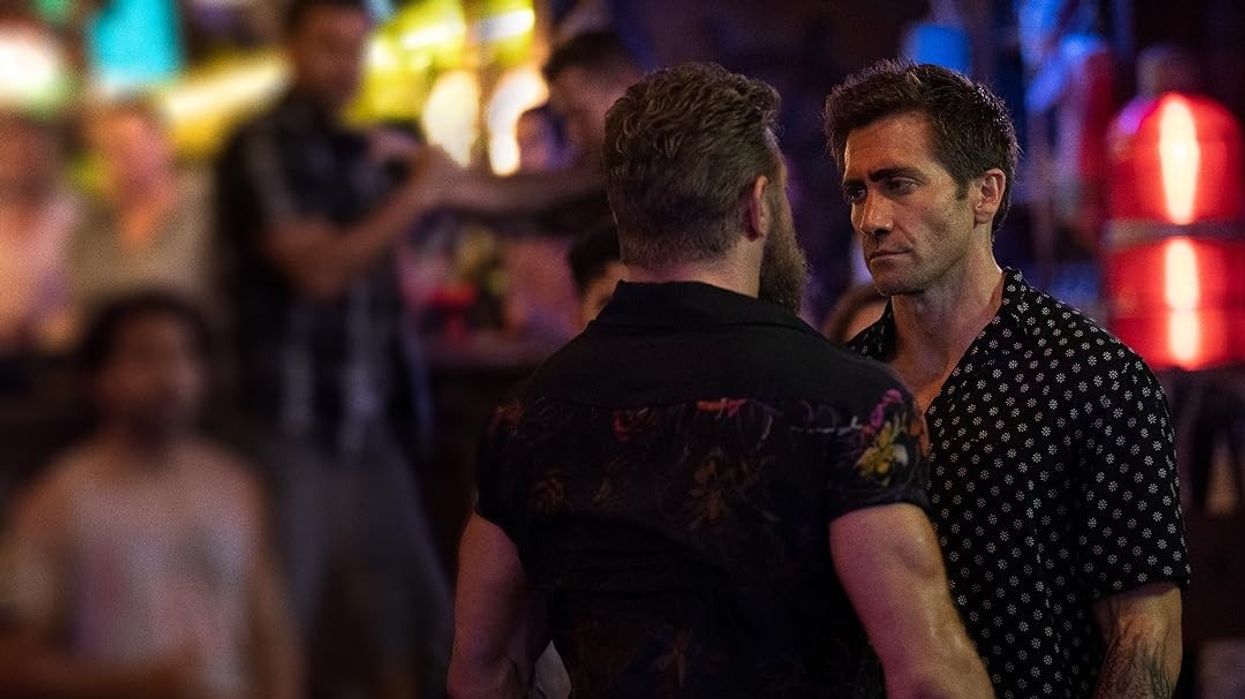How One Filmmaker Used Real Robots to Create His Original Sci-Fi Indie
On his film Lapsis, Noah Hutton took all kinds of risks.

Do you want to utilize ambitious practical effects on your own projects? What about ensuring an ethical work environment for your cast and crew? This story could teach you how.
Lapsis is a sci-fi film set in a parallel, present-day version of New York, where Ray Tincelli (Dean Imperial) cares for his younger brother suffering from a chronic disease. Desperate for money, Ray decides to take a gig as a "cabler," a grunt job that involves laying cable through miles of forest to connect large, ominous transistors that link together the "quantum trading market."
He soon learns that he's competing against robots for routes and faces strange hostility from fellow cablers. Ray finds himself in the middle of a struggle that will force him to pick sides fast.
The project incorporates some big, innovative ideas, both in its storytelling and production methods. Let's dig in.

Starting as a documentary filmmaker
Hutton's background was primarily in documentaries, short films, then commercial work. All of that informed how he approached this project.
"I think documentary film was a great way just to start seeing the world through film," he said. "It allowed me to start making films and be really nimble and get out in the field and start telling stories."
He also said documentaries expanded his horizons in terms of interacting with new people and environments. For instance, the setting of the North Dakota oil boom was new to him when he was making his early documentaries. While working on commercials and music videos, he said he began to see how he could craft his own stories.
Having to shoot, edit, and make music for his documentaries made his transition to writing, directing, editing, and composing for Lapsis a natural one.
"Documentary film was a great way just to start seeing the world through film."
"Because I came out of documentary, and I was really one-man-banding many of these shoots myself out there, then coming back and editing and composing the score," he said, "it's how I know how to make things."
Lapsis was shot on a RED Gemini using Panavision Cooke Xtal Xpress anamorphic primes and a Panavision anamorphic zoom. Hutton cut the movie in Adobe Premiere Pro. No post visual effects were needed because all the effects were practical. They used Frame.io while editing to organize cuts of the film.
But this doesn't mean that Hutton didn't seek help where it was needed. On Lapsis, he said there were over 40 speaking roles and over 100 extras total. This was a new experience for him, and he said he relied heavily on his team to help navigate any unfamiliar logistical challenges.
"I had very little experience running a set of that size," he said. "But I had incredible people around me. I had great producers. I had an incredible line producer."

Working with real robots
The nefarious robots in the movie are real, and all movement sequences were captured in-camera.
Hutton said that he saw a robot on the Boston Dynamics website and reached out to Daniel Koditschek and his lab at the University of Pennsylvania, which is known as Kod*lab. The robot in the film is the "RHex" model, and Hutton was able to use it at no cost.
Hutton said the students from the lab came to set to help with sequences, and it became an official academic project for which they received academic credit. Hutton said he will soon screen the film for the lab and discuss the collaboration.
"We really didn't think this movie could be made unless we found robots that could work in this way, that also wouldn't kill our budget," he said. "This was a total miracle to find this lab. We didn't have to pay to get these built. It was a real godsend."

Creating a production handbook
Hutton calls Lapsis "a blue-collar sci-fi story" about financial uncertainty and the malignancy of large corporations taking advantage of the gig economy. Because he was making a film on such timely subjects, it was important for him to protect everyone and create ethical environments for the crew who worked on his own movie.
While making the documentary short Guts in 2018, Hutton and his team underwent training during their collaboration with a marine science laboratory. The lab used a handbook that the team realized could be valuable in shaping relationships and interactions on film sets. Hutton adapted it for use as a production handbook.
"I believe that a film shouldn't be judged by the success of its output," Hutton said. "By box office, by how many good reviews it gets, how big the sale is. I really truly believe it should also be judged by its methods and its lived ethics on set and what it replicates out in the world."
"I would just say to anyone thinking about the world they want to create on a set, what is that world they want to create? Write a handbook that reflects that world."
Hutton called a film set "a mini-society" for the time of production, and anyone wanting to create or adapt their own production handbook should view the work environment similarly.
"I would just say to anyone thinking about the world they want to create on a set, what is that world they want to create?" he said. "Write a handbook that reflects that world."
Hutton's production handbook is open-source and free to use from the Couple 3 website for your own productions.

His advice to indie filmmakers
Obviously, there were a lot of big concepts that Hutton pursued on this film that ended up working out extremely well. Hutton said he would encourage indie filmmakers to think outside the box and go big on their own projects.
"I think we need more films with big, ambitious ideas," he said. "There's a force to try to make things that you've seen before and that are out there. That can be helpful, to have references. There's a danger, but also a need, to trust your big idea because there's a reason it stayed big inside of you. It hasn't been softened by seeming like other ideas. It is big and unique, and if you can trust it and run with it, it can create something that hasn't been seen before."

Hutton also said that directors also should always endeavor to give themselves time for experimentation.
"There can be such a time crunch, which is bound at the hip to pressures of your budget and what it allows, and you can feel like you need to spend every shred of time you have stepping in to say that perfect thing to an actor that will lead to an even better take. On the time-crunched-indie schedule, though, this can be a trap. Sometimes it's actually there in the first take—you watch a performance, and you believe in its truth. And if that sensation can be trusted in that split second (which feels crazy to do—shouldn't we do another one, for safety?) then by moving on to something else, or trying something that has more space in it for improvisation and looseness, or making sure there's time to get those inserts or alternate wide shot that have crept into your imagination, the scene can eventually be that much more bristling in the end with the full weirdness of life. It's mostly advice to myself for the next time, because this is all a work-in-progress: believe in your gut, and stay loose."
Lapsis was slated to premiere at SXSW on March 16 and is currently seeking distribution. Hutton said he's already working on writing a new sci-fi feature script, too.
What's next? Continue learning from indie filmmakers
Want to see how creators of viral, low-budget horror work? What about making a feature on a micro-budget? We've also got advice for surviving your first feature film.











